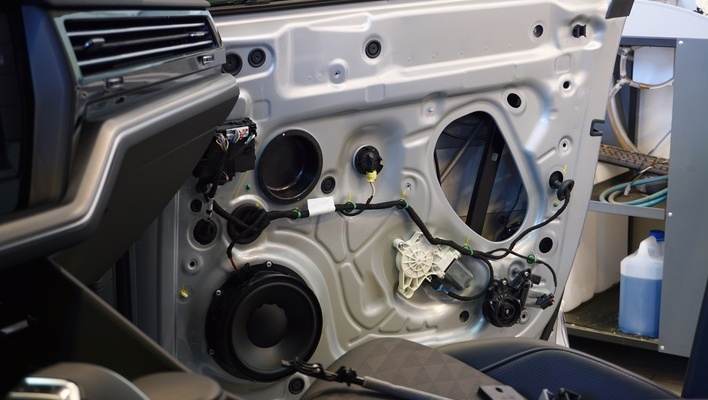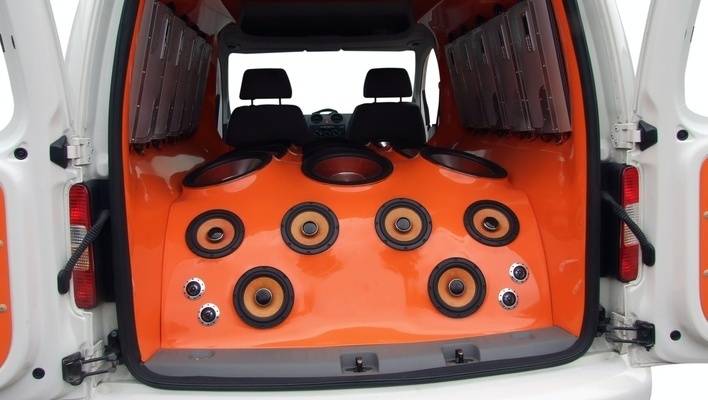Are you constantly worried about speaker impedance, especially when choosing between 6 ohm vs 8 ohm speakers? If you’re in such a dilemma, find out more here.
If you’re a music lover, sound quality comes before everything else. But you also have to keep your equipment playing optimally without frying your amp’s or receiver’s circuits. Many people run to online forums at the first sign of trouble or when looking for answers. Making the right decision between 6 ohm vs 8 ohm speakers requires a deeper dive into the matter. Read on to find out more about 6 ohm vs 8 ohm speakers.
It is essential to mention that speaker impedance is merely one factor to look at when choosing your speakers but not the only one. Why? Even the most experienced experts in working with all kinds of speakers can’t always seem to agree on what’s best. For example, some car audio pros will recommend 6-ohm speakers, while others will go for 8-ohms depending on other factors like the amp, receiver, and how they’re all wired together. While this may sound a little bit confusing, you don’t have to be all geeky to make the right choice. Follow a few basic rules, and you’re good to go!
What is Speaker Impedance, and How Does It Affect The Overall Sound Quality?
Speaker impedance simply refers to speaker resistance (the opposition to the flow of a current). It is a measure of how much a speaker allows or restricts the flow of a current when playing music. Impedance is measured in Ohms. A lower impedance implies that the current will demand more power from the receiver or amp. For example, this would mean that a 4-ohm or 6-ohm speaker would draw in more power from the amp or receiver than a 6 ohm or 8-ohm receiver.
However, speaker impedance is not a fixed value but a constantly changing variable that heavily depends on the frequency of the signal passing through it. Music is a combination of many frequencies, meaning that the speaker may barely stick to the labeled impedance. There are two main reasons why speakers have varying impedances; all speaker drivers have a resonance frequency at which the driver’s free movement creates some opposition towards the flow of an electric current.
Secondly, inductance also directly affects speaker impedance. When playing music at higher frequencies, the voice coil tends to undergo inductance (a measure of how electric circuits tend to generate an electromotive force in response to the flow of a current). This, in turn, increases the speaker’s impedance. Today, most speakers fall within the 4-8 ohm range, with the 4-ohm speakers being the OEM’s high-end models. At this level, they would require the amp to deliver more power (current) to make the drivers move. 8-ohm speakers, on the other hand, need less power for the drivers, so you can use a less powerful amp or receiver.
More About 6 Ohm Speakers
The ohmage on a speaker indicates its power-handling efficiency. All this depends on Ohm’s Law (V=IR)
- V stands for voltage
- I stands for current
- R stands for resistance (in this case, impedance)
A 6 ohm speaker may not be the most popular speaker out there, but they’re some of the easiest to drive without putting the amp or receiver at risk. In fact, they’re considered a safe standard for many amps and receivers.
Playing your 6-ohm speakers at a very high volume with a lower amp could lead to clipping or distortion as the amp struggles to deliver the required power. Instead, you want to match the impedances of both your speaker and amplifier because mismatched speaker impedance can pose a threat to the amp (if done the wrong way), lead to distortion, and also harm the sound quality.
More About 8 Ohm Speakers
An 8-ohm speaker is one of the most common options you’ll find in today’s market. Many manufacturers stick to these speakers since they’re easily compatible with almost all amps out there.
In some cases, one can find speakers rated 4-8 ohms, implying a nominal impedance of 8-ohms and a minimum impedance rated at 4-ohms. Intermixing 6-ohm and 8-ohm speakers shouldn’t be a problem because the range isn’t too much. The problem comes in when trying to match speakers with a huge difference. For example, matching 4 ohms with 16 ohms sounds unrealistic and would result in an overheated amp if it’s not designed to handle big loads.
OEMs usually stick to 4-ohm and 8-ohm speakers but have you ever wondered what happens if speaker impedance is too low? The amp would experience all kinds of wrongs, including distortion, weak output, clipping, or enters into protection mode as it tries to push the excessive load.
Making Your Decision: Speaker Impedance Vs. Sound Quality
One of the biggest problems we face today is the biased information that is freely available online. Car audio discussions and forums tell people to buy a particular system while others warn against particular practices (e.g., not connecting specific speakers to certain amplifiers). The truth is, high-end amps are designed to handle slightly bigger loads than what’s written on the package. They should switch into protection mode if the load gets too high. Also, you should avoid playing music at very high volumes, especially if your amp’s capacity doesn’t match that of the speakers.
When it comes to 6 ohm vs 8 ohm speakers, the numbers don’t mean too much. They’re just a standard that manufacturers use to indicate the load-bearing capacity of the speakers. But remember, 6-ohm and 8-ohm speakers are designed to go with most receivers and are some of the most common speakers available today. However, you can still make your decision based on these tips;
The Amp Design and Manufacturer
Some amp and receiver manufacturers design their amp with an impedance switch at the back. The idea here is to match the speaker impedance to a value that the amp can handle efficiently (the switch provides room for varying impedances). This, in turn, protects the equipment from overworking, overheating, and risks of permanent damage after handling a load too big.

Available Space
Don’t make the mistake of forcing speakers where they can’t fit perfectly. Don’t install very powerful speakers in a small space unless you intend to play music at a reasonably low volume. Also, don’t install weaker speakers in huge spaces where powerful speakers could work best. You may end up driving way too much power through the amp to make the weaker speakers loud and clear.
Instead, you want something that fits right into the available space. For instance, 8-ohm speakers are commonly found in home theater systems, but they can be used in cars too. 6-ohm speakers, on the other hand, are commonly used in cars since they require much more current to run.
The Type of Wiring(Series or Parallel)
The wiring system also helps determine which speakers are the right pick for your car. This is because wiring has a direct effect on the load pushed to the speaker. For instance, wiring in series sums up all the individual resistances of the speakers in the system. Say you have three speakers; 4-ohms, 8-ohms, and another 4-ohms. The total impedance would be calculated by adding the individual impedances for each speaker, i.e. (4+4+8)=16-ohms.
On the other hand, wiring in parallel lowers the load. For instance, say you have two 4-ohm speakers. The total impedance would be calculated by multiplying the individual impedances (4×4) and dividing this number by its sum, i.e. (4+4=8). Therefore, the impedance, in this case, would be 2-ohms. For more information on how to change ohms on speakers through wiring, visit our website today.
Final Remarks
Are high impedance speakers better? It depends on the amp or receiver. Matching the amp to the speaker impedance allows you to enjoy your music safely. Again, bringing all your attention to the speaker impedance curve proves that impedance is not the most critical variable. Instead, you want to focus more on the audio quality and quality of the equipment since these directly affect the efficiency, performance, and lifespan of your speakers. Otherwise, choosing between 6 ohm vs 8 ohm speakers shouldn’t be too difficult. If you have further questions or concerns, don’t hesitate to ask an expert today.

